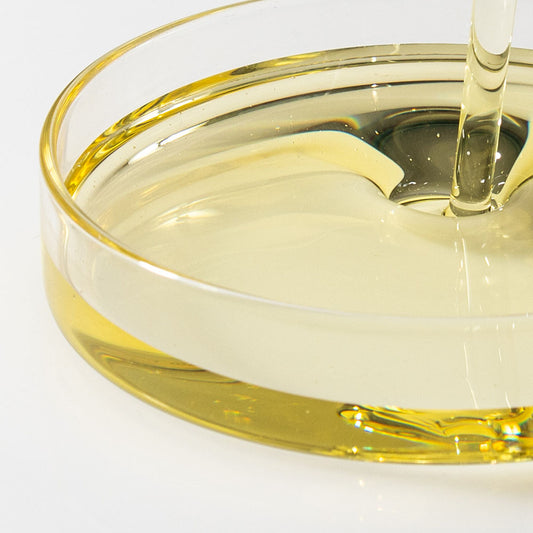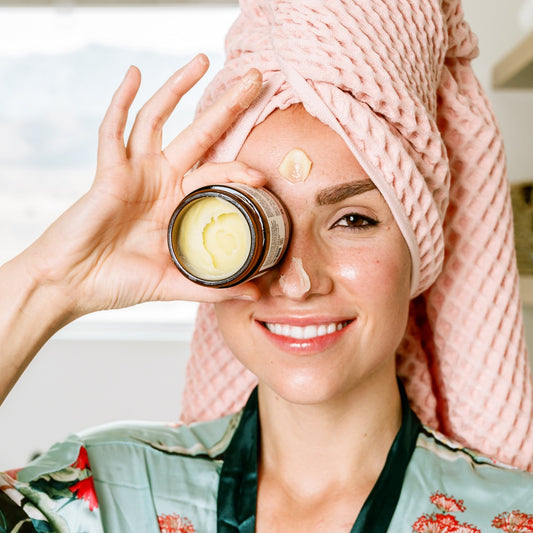There's a current craze surrounding the use of oil for different health practices. In Ayurveda, the craze is thousands of years old! There is a long tradition of using herbal oils to support and maintain health. The current trend and ancient wisdom agree that washing your face with oil is more beneficial than using water, but this advice often receives quizzical looks.
With a little explanation about why oil can be the best cleanser for your skin, even the skeptical are persuaded!
How Our Skin Works
The sebaceous glands in our skin produce an oily, waxy substance called sebum. Sebum is our skin's natural hydration and protection. A healthy amount is like a barrier, protecting our skin from environmental factors and infection.
Vata skin types can be prone to underproduction, which leaves the skin feeling dry and vulnerable. On the opposite end of the spectrum, overproduction can leave a residue on the skin, ultimately leading to clogged pores, acne, and other kinds of skin conditions. Kapha skin types lean more in this direction, whereas pittas often see a combo of both.
If we try to counter the dirt and residue with water, we risk washing away the healthy layer of sebum with it.
As you wash repeatedly with water to erase your blemishes or your propensity to oily skin, your body wises up.
The natural oils start to be stripped away and your skin produces more and more in an effort to keep the hydration and protection it needs.
Enter Oil.
Oil is more skilled at cleansing and balancing the hydration of your skin than water, and it is a closer match to your skin's natural outer layer. It has a soft quality that can help to draw out impurities, making it much easier to unclog pores. As it helps to pull away dirt, makeup, and pollutants, it also attracts any excess oil.
The outcome? Clean, soft, hydrated skin. All the bad stuff gets washed away, but the natural hydration of the skin is maintained. For some, this could even mean reducing the amount of creams, oils, and moisturizers used after cleansing.
Which Oil Is Right for You?
Convinced you should make the switch? Start by selecting an oil appropriate for you, taking into consideration the season, your predominant dosha, and of course, the state of your skin. (Want to learn about your doshas and your Ayurvedic body type? Take the quiz!)
Banyan's organic Sesame Oil is also a great choice, with its grounding, calming, and warming qualities. It absorbs easily into the skin and carries its soothing properties deep into the tissues of the face. Sesame Oil is especially beneficial for dry skin, making it excellent for balancing vata. Its heating quality can also be good for kapha.
You might also consider Castor Oil—its rich texture is thicker than most and has the ability to deliver intense moisture to the skin. Its cooling and nourishing properties make it a great choice for calming pitta, although it is balancing for all doshas. You can even mix it with another organic base oil, like sunflower, for a thinner oil that cleanses beautifully!
Coconut Oil all on its own can also be a great option for cleansing the face with oil. Using Coconut Oil will especially help to alleviate dry, cracked skin by offering natural protection and moisture. By cleansing in this way, you can also help soothe rough patches on the skin.
How to Cleanse Using Oil
We recommend doing this process once a day, preferably at night, using just water to rinse your face in the morning.
- The cleansing ritual begins by placing a warm, wet washcloth over your face to help open your pores and release impurities.
- Then, gently apply a small amount of oil into your skin. Take this time to give your entire face some extra love, allowing yourself to enjoy the massage as you melt any remaining tension away.
- Rinse the oil by lightly pressing a warm, wet washcloth onto your face.
- Next, gently remove all the oil with the washcloth, allowing for a lovely exfoliating experience.
- Dab dry with a clean towel.
Now observe your fresh face and glowing skin!










